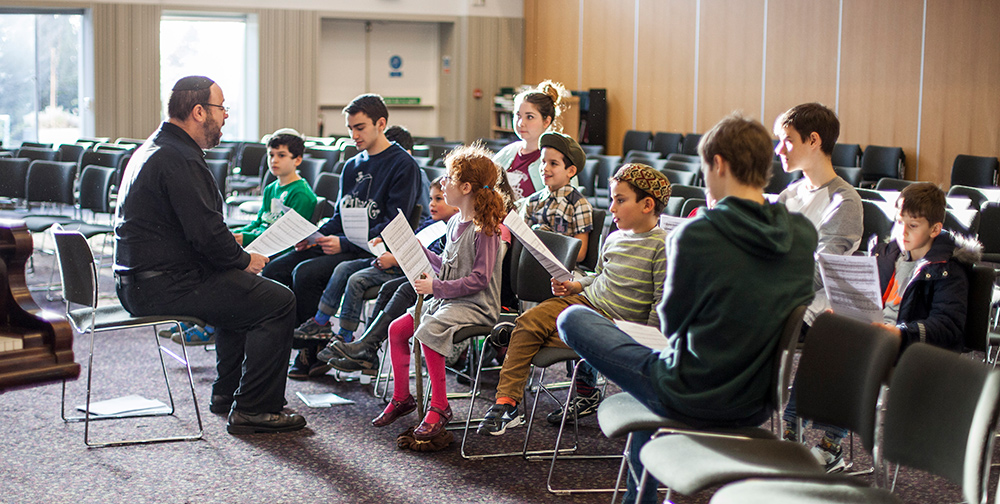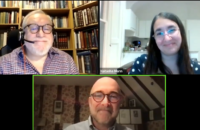Seeking Monsieur Chouchani

In the Jewish graveyard of Montevideo, Uruguay, can be found an inscription on a gravestone that reads: “The wise Rabbi Chouchani of blessed memory. His birth and his life are sealed in enigma.” The brilliant and bizarre Monsieur Chouchani casts a long shadow over 20th century intellectual life, though we know virtually nothing about him, not even his real name.
Chouchani was a prodigy who had studied in the yeshivas of Eastern European, and perhaps also with Rabbi Isaac Hacohen Kook in Palestine in the 1920s. It’s likely he spent time in America before returning to Europe, surviving the Holocaust in France or Switzerland, and reappearing in Paris after the war as in itinerant teacher. Here it was that that author Elie Wiesel and the philosopher Emmanuel Levinas – towering giants of post-Shoah thought – encountered him. Later he lived in Israeli kibbutzim, and different places in South America until his death in 1968.
In his memoir, Legends of our Time, Elie Wiesel devotes a chapter entitled The Wandering Jew, to Chouchani, whom he first met in 1947. “No one knew his name or his age: perhaps he had none. He wanted no part of what ordinarily defines a man, or at least places him.
“He popped up almost everywhere, always unexpectedly, only to disappear a week later, a year later without leaving any trace. He would turn up, always by chance on the other side of a frontier, a mountain: as a miracle-working rabbi, businessman, servile beadle. He had been around the world several times without money, without passport; no one will ever know how or to what end. Perhaps he had done it precisely so that no one would ever know.
“His birthplace was now Marrakech, now Vilna, then Kishinev, Safed, Calcutta or Florence. He produced so many proofs, so many details that he managed to be convincing about each place as the final verity. But the next day the edifice would crumble: he would describe in passing the enchanting atmosphere of his native town, somewhere in China or Tibet. The vastness of his exaggerations exceeded the level of falsehood: it was a philosophy.“
Wiesel’s account is determinedly literary, even mythic. He describes how he, a promising student, is taken on by a brilliant but capricious master. The student is broken down and rebuilt in a process that is challenging and painful. They meet three times, the third time marking the start of their three years studying together, an apprenticeship which ends when the master abruptly disappears again. Specifically Jewish references are scattered throughout the story – Wiesel wanders the streets of Paris seeking the mysterious sage like the lover from the Song of Songs. He watches Chouchani hold forth to a class who are so captivated by his teachings that, like the rabbis in the Haggadah, they miss the opportunity to say their prayers. Wiesel, like Ruth, declares his faithfulness to his master and vows to follow him.
The Master’s knowledge is vast. “Bible, Midrash, Zohar: the questions fused together. Some student, to carry the test to the point of absurdity, questioned him on international politics, on the atomic bomb, and even on superstitions in the Middle Ages.” There are rumours that he knows the Koran, mathematics, nuclear physics, every single entry in the Aramaic and Hebrew dictionaries.
The mythologisation is complete in a later essay where Wiesel learns the manner of his teacher’s death:
“Sitting on a lawn, surrounded by students, he was teaching them Talmud when suddenly he paused in mid-sentence; a moment later he had stopped breathing. In Jewish tradition such death is called mitat neshika: the angel comes and embraces the chosen one like a friends and takes him along without inflicting pain.”
There’s a satisfying self-referential post-script to this story: “In his pockets they found my tale about my encounters with him. So I know that he read it. But I shall never know what he thought of the portrait I had drawn. One thing is certain: he recognized himself.” (ibid p159)
Chouchani the Wandering Jew is an archetype, a staple trope of Jewish folklore. In his description Wiesel also invokes Elijah the Prophet, harbinger of the Messiah; the Lamed Vavniks by whose righteousness the world endures; saintly Hassidic rabbis and holy men who are reputed to split their time between heaven and earth. Wiesel’s writing offers depth and detail to the historical record.
The person of the master is indistinguishable from his message. After his death, some of Chouchani’s writings find their way to Wiesel. They are indecipherable, “I could read them but could not understand their meaning”. Wiesel also receives a letter purporting to tell the truth about his master – “his name, his origins and secret voyages. The mystery was solved”. The letter forbids him to divulge these details and Wiesel honours this final wish for even were he to disclose them “we would not know more about who he really was”.
Wiesel’s Chouchani is a bridge to a certain kind of Eastern European Jewish sensibility that has been all but decimated in the Shoah. A tissue of stories and contradictions, his last instruction to Wiesel is: “Think over my lesson and try to destroy it”. Chouchani is emblematic of the chaos, mystery, and sheer unknowability of human experience.




